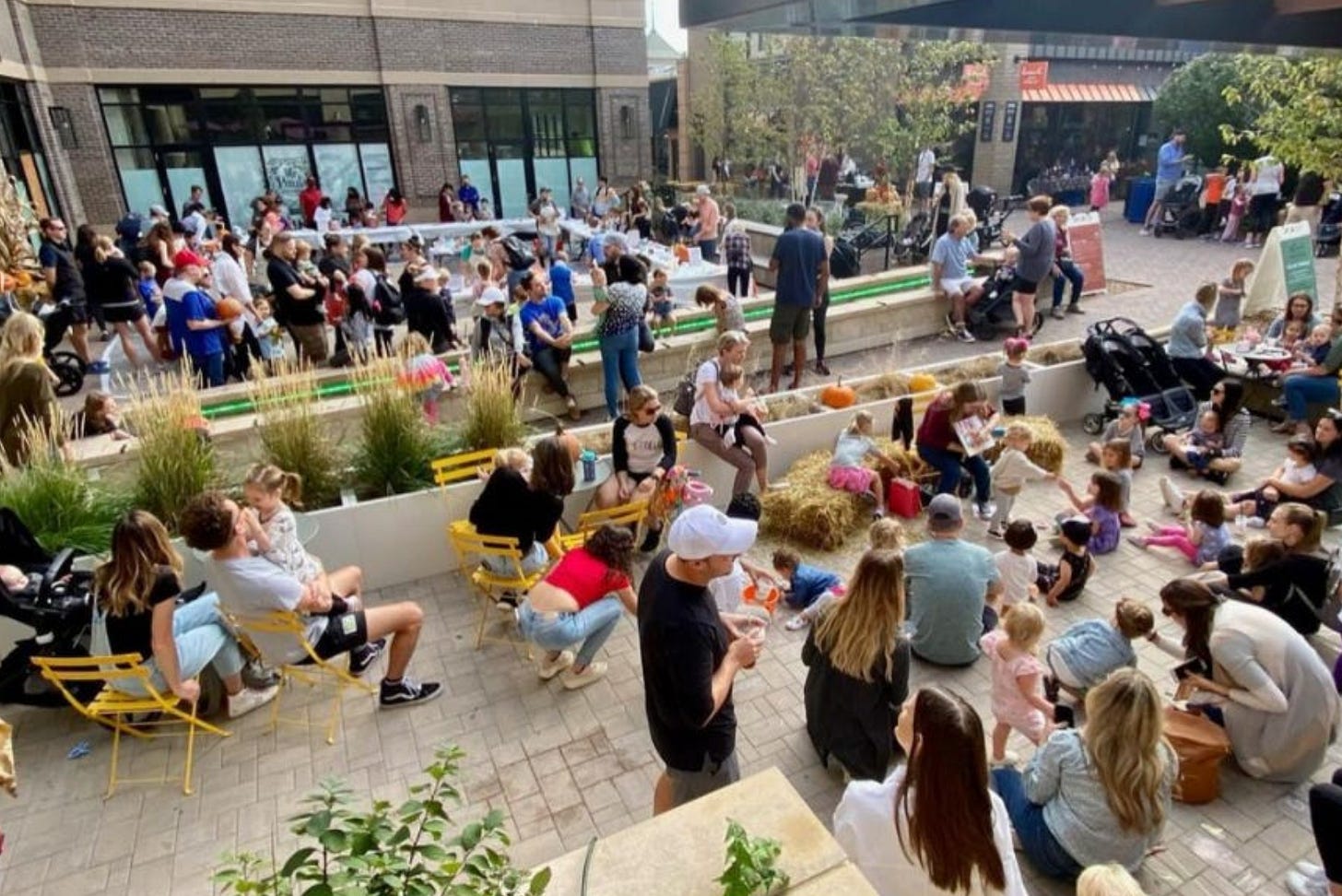A Hierarchy for Habits: Experience & Event Strategy for Activation
How important have events been in the life of cities and human settlement? There is much evidence that they were not merely a feature, but the organizing principle for some of the first cities. Some of these cities were relatively permanent, others had huge ebbs and flows throughout the year that mapped to religious/seasonal calendars (See: The City in History by Lewis Mumford and The Dawn of Everything by David Graeber and David Wengrow).

Events have an important role to play in our work to create places that foster stronger interpersonal relationships, supportive communities, deep feeling and commercial vitality.
And, just like thinking that only changing the design of a space will allow us to achieve our desires and goals is a major trap, so too is thinking that events alone can significantly change much about a place, a community, or a commercial district.
When discerning how to spend our limited time and capacities to best bring a place to life, where do events sit within our priorities?
The Importance of Habits
In our pursuit of any aspirational goal within a place, the formation of positive habits is our path. Why? Here’s the logic:
Positive & Useful Experiences: If people have positive and useful experiences in a place, then they will
Use it More: By frequently using the space they establish
Habits and routines: These habits are the foundation that support enterprise and
Relationships: between people and the space itself. These relationships are non-portable and create locational
Value: Both socially and commercially.
The formation of positive habits unlocks the reliable frequency of use that allows relationships to be formed, provide certainty for commercial activities, and have use grow more easily over time without being overly dependent on special or extra-ordinary factors.
A Hierarchy for Habits
From this vantage, we can develop a hierarchy of prioritization, or a sequence of experiences to focus on creating in a given place:
Each one of these can be habit forming - an annual tradition that occurs for decades or more can be a powerful driver of activity, meaning, community, and commerce. Certainly we can think of the impact of all that the Christmas holiday has on our personal, family and economic life.
But why the hierarchy? Why would a space that was successfully delivering only monthly or seasonal events be less vital, less ultimately successful than one that provided a robust and positive daily experiences without any larger, less frequent events?
Let us posit that relationships are built one interaction at a time. That each interaction is represented by a thread. And that the density of these threads then grows over time. Within a place, many interactions can take place during a visit, creating a relational web for each person.
What scenario would lead to the strongest web? In density? In resilience, should one source of interaction/relationships go away? The daily visitor who has positive experiences, develops a more rich, dense, web of relationships much more quickly than more periodic patrons.
Event Series > Big Bangs
If we’ve established a solid foundation of everyday experiences - what next? The hierarchy tells us to move to the next most frequent experience: weekly or monthly events series. Why?
A goal of any event should be to drive visitation to the place when there is no event happening.
And regular events, rather than big one-time affairs, are the best way to achieve this. Why?
Building a sustained audience: The repetition of events allows an audience to grow through greater awareness, rather than having all your eggs in one event date basket. Those that attend a regular event series are able to start to form their own positive habits with the event and the place itself.
Ability to learn and adapt along the way: the frequency and repetition allows for a larger sample size to learn what is actually working and not, and the time to make adjustments
Developing Synergies: more frequent events allow for more synergies between the event and the surroundings of the place to form. The consistency allows other actors to play off of and with the events over time - developing new richer webs of connection and activity. Conversely, a big event can often have so much of its own gravity that visitors hardly can experience the features of the place where the event is occurring. And the lack of frequency make tie-ins riskier and more disruptive for outside actors.
Narrative formation: the frequency and consistency of events provides ongoing fodder for positive conversation and narrative about a place. “There’s always something happening there” vs. “I go there for that one event”
The added impact of experiences and relationships forged on a daily or regular basis through event series is that they project forward. Past recurring behavior is a strong indicator of future behaviors. The habits, the memories, the emotional bonds that are made between people and the physical environment of a place are non-portable. Even if an identical set of uses and experiences was delivered in an equally convenient location, the memories and personal relationships cannot be transferred.
As long a baseline quality of experience and utility is in place, people want to go where they are used to going and have positive memories.
To summarize, a place that provides a positive experience all the time is going to be active and thus more socially and commercially valuable than a place that is mostly empty with a few large events.
So, follow the hierarchy to form those habits!
If you enjoyed this article, please share it with others who you think could benefit from our ever expanding library of placemaking resources, tips, and tricks:


